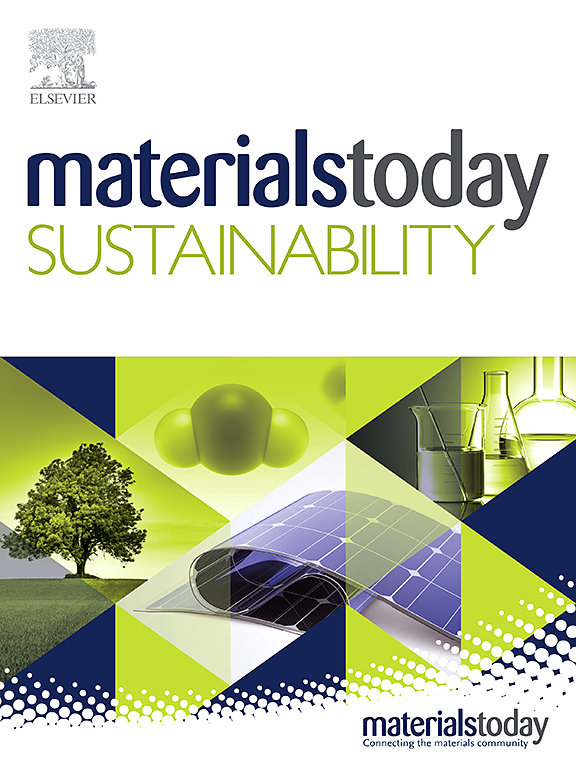Xanthan gum biopolymer for uniform dispersion of halloysite nanotubes to enhance micro- and macroscopic performance of cementitious composite: A sustainable alternative to chemical surfactants
IF 7.1
3区 材料科学
Q1 GREEN & SUSTAINABLE SCIENCE & TECHNOLOGY
引用次数: 0
Abstract
To fully exploit the potential of halloysite nanotubes (HNTs) in cement-based composites, stable dispersion in cementitious environments is essential. While polycarboxylate ether (PCE) is commonly used for this purpose, xanthan gum (XG) biopolymer offers a greener alternative, providing stable and uniform dispersion. XG-modified HNTs show promise in enhancing the engineering properties of these composites, but their impact on micro- and macroscopic characteristics is still unclear. This study comprehensively assessed the influence of XG-modified HNTs on hydration-phase assemblage, pore structure, microstructural morphology, as well as compressive strength and transport properties in cementitious materials, and compared these results to PCE-modified HNTs in similar systems. The results demonstrated that XG-modified HNTs significantly outperformed PCE-modified HNTs by reducing calcium hydroxide (CH) content and refining CH crystal structures. Additionally, XG-modified HNTs accelerated cement hydration more effectively and promoted enhanced gel structure formation. Importantly, XG-modified HNTs contributed to a greater reduction in pore size and porosity, a more uniform pore distribution, and the formation of a more homogeneous cementitious matrix compared to PCE-modified HNTs. Furthermore, after 90 days, the HNT-XG mixture exhibited increases in compressive strength (14.3%), ultrasonic pulse velocity (7.1%), and electrical resistivity (13.3%) compared to the HNT-PCE mixture. Finally, the sustainability assessment revealed that using XG biopolymer results in 48.6% lower energy consumption, an 89.4% cleaner production process, and 16.3% lower production costs compared to PCE. Consequently, XG biopolymer can be considered a superior and sustainable alternative to chemical surfactants like PCE for the uniform dispersion of HNTs in cementitious systems.

求助全文
约1分钟内获得全文
求助全文
来源期刊

Materials Today Sustainability
Multiple-
CiteScore
5.80
自引率
6.40%
发文量
174
审稿时长
32 days
期刊介绍:
Materials Today Sustainability is a multi-disciplinary journal covering all aspects of sustainability through materials science.
With a rapidly increasing population with growing demands, materials science has emerged as a critical discipline toward protecting of the environment and ensuring the long term survival of future generations.
 求助内容:
求助内容: 应助结果提醒方式:
应助结果提醒方式:


